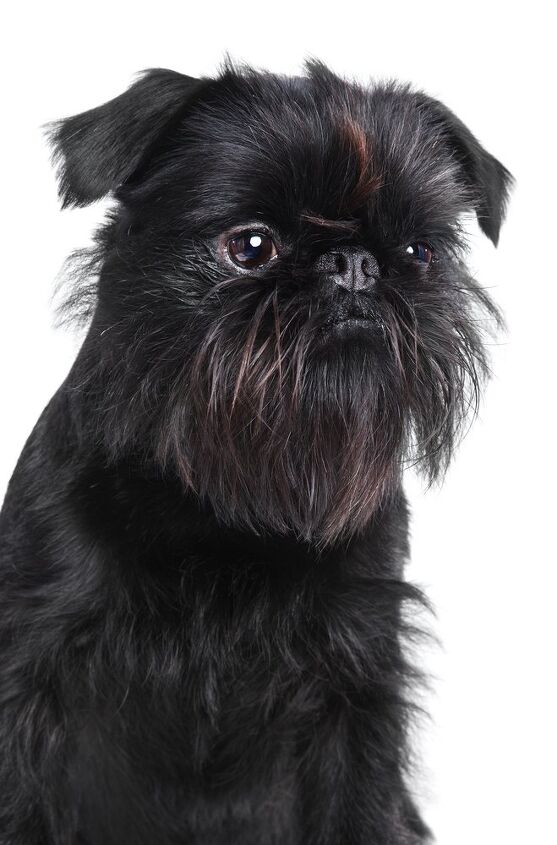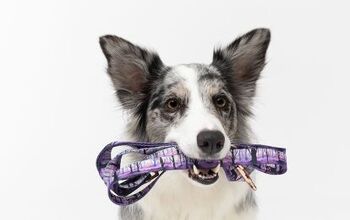Brussels Griffon


About Brussels Griffon
If you’ve never heard of the Brussels Griffon, you’re not the only one. This cute little dog looks like a mini disheveled Bulldog – it shares the same stocky stance and adorable overbite. But the Brussels is a breed all its own, and to lovers of the breed, there’s no other dog quite like it. Ideal for apartment dwellers, the pint-sized Brussels Griffon is spunky, playful, yet stubborn and mischievous. Good with other pets and children, the Brussels will try to climb onto your lap whenever possible. Read on to learn more about this fascinating breed.
Often called “monkey face”, the Brussels Griffon has also been compared to certain Star Wars characters- it seems that these adorable pooches look a lot like Ewoks, a species of adorable yet feisty creatures from the science fiction movie. And it’s not a coincidence, either, since George Lucas, the creator of the franchise, had a Brussels Griffon dog at the time and used his pet as an inspiration. Curious to find out more about these unusual and adorable dogs? Read on for more information about the petite Brussels Griffon.
Ideal for apartment dwellers, the pint-sized Brussels Griffon is spunky, playful, yet stubborn and mischievous.
Named for its city of origin (Brussels, Belgium), this playful little dog made its debut in the 1800s. These diminutive dogs were actually bred to catch mice and rats in the barns of the finest European estates. It didn’t take too long for stable boys and coach drivers to decide that these dogs made excellent companions. In fact, the Brussels Griffon became the official mascot of cabs in Brussels!
The same way they advanced from stables to horse-drawn cabs, these spunky dogs quickly rose even higher. Once the charm and cuteness of the compact Brussels Griffon became apparent to noblemen as well, it didn’t take long for them to be prancing about fancy estates. By the end of the 1800s, Brussels Griffon found its way out from Belgium, both to the United Kingdom and the United States, where it quickly became a popular pet and family companion.
Experts in canine history and genetics thing that several other purebred dogs were used to perfect the breed we now know as the adorable Brussels Griffon. According to some sources, dogs such as Affenpinscher, the Pug, and even English Toy Spaniel gave their genetic contribution to the development of these memorable canines.
There are three variations of this dog in its native country. The Brussels Griffon (Griffon Bruxellois) which is distinct for its rough red coat, the Belgian Griffon (Griffon Belge) who also has a rough coat but is available in all other colors except red, and the Petit Brabançon, the smooth-haired variation of this breed. In the US, the distinction is made only between the rough and smooth coated Brussels Griffon.
The Brussels Griffon was recognized by the AKC in 1910.
Nutrition directly influences every aspect of your dog’s life, so make sure your Griff has a healthy, well-balanced diet. Like every dog, these compact canines will need to eat meals that have the right ratio of protein, healthy fats, fiber, complex carbs and a blend of important vitamins and minerals. While this might sound like a complicated task for a pet owner, it actually isn’t- a high-quality dry dog food will offer all that to your pet. Choose a kibble that is made from healthy, natural ingredients that’s suitable for your Griffon’s age (puppy, adult, or seniors) size, and activity level (kibble formulated for toy breeds is a good fit).
As a small dog, this breed doesn’t require large quantities of food. As long as you feed them premium food, you can rely on the manufacturer’s recommendations for serving sizes- even if a cup or two of kibble doesn’t seem like much. You should also avoid free feeding your Griff, as overeating will lead to bloat and weight gain, neither of which are good for your pet’s health.
Good with other pets and children, the Brussels Griffon will try to climb onto your lap whenever possible.
If you’re going to be training a Brussels Griffon, you’re going to need plenty of patience. Sure, this is a pretty smart breed, but you need to treat your dog gently in order to get the job done right. House breaking a Brussels Griffon will require time and patience, as well as flexibility. On the positive side, the Brussels Griffon wants to please you, so it will try its hardest during training sessions.
While training, be aware of your dog’s stress level. As the Brussels Griffon is a sensitive dog, you’ll need to be gentle with your training tactics – if you’re harsh, it will only cause your dog to fear you and you could lose ground on the progress you’ve already made. It will take consistency, sensitivity, and dedication to do the job right.
Remember that new experiences can be a bit overwhelming for the Brussels Griffon. If you’re planning to leash train your dog, start it young, between the ages of four to six weeks of age.
Both male and female Brussels Griffons weigh 6 to 12 pounds.
A cheerful and charming breed, many experts say that the Brussels Griffon will be happier with an older couple or single person, as children can make them a bit nervous. But there is an exception to this rule if the dog has been socialized from a young age and is therefore used to children.
One of the things that draw people to the Brussels breeds is that it has a loving nature. This dog loves to interact with its owners and will be at its happiest when allowed just to be with them. It doesn’t matter what you want to do or where you want to go – the Brussels will want to come along with you.
The Brussels Griffon does best with a relaxed home life where it can just be laid back.
A fairly healthy dog for the most part, most of the Brussels Griffon’s common ailments are directly related to its unique facial structure. This dog’s eyes can be troublesome, and it’s not unusual for this breed to develop cataracts, distichiasis, and prolapse of the eyeball. As well, lacerations of the eyeball can occur. You will need to keep watch over your Brussels Griffon in case of progressive retinal failure.
Because the Brussels breed has narrow, slight nostrils, this can cause problems with breathing. This condition is worrisome if it is accompanied by an overlarge soft palate.
Brussels Griffons have a life expectancy of 13 to 15 years.
Another great reason why the Brussels breed is good for seniors is that it doesn’t require a lot of exercise. If you live in an apartment or a small home, this breed can get enough exercise indoors, no matter how small the space.
If you’re feeling up to it, the Brussels Griffon likes to run obstacle courses, which highlights its natural ability as ratters.
A cheerful and charming breed, many experts say that the Brussels Griffon will be happier with an older couple or single person.
The American Kennel Club says this about the breed: “The intelligent and cheerful Brussels Griffon has a terrier-like disposition and is known for his almost human expression. This affectionate breed comes in a variety of colors, including red, belge (black and reddish brown), black and tan, or black. This breed makes a good watchdog and can be taught to perform a variety of tricks. A Brussels Griffon was featured in 1997’s hit, “As Good As It Gets”, starring Jack Nicholson and Helen Hunt.”
The Brussels Griffon dog comes with two different coat types: soft and wiry. The soft coated dogs have shiny hair that lies flat, while wiry coated Brussels Griffon needs to be brushed frequently. The Brussels Griffon’s coat can be red, black or black and tan.
Griffs are a toy-sized breed, and, as such, they have small litters. Usually, the size of a Brussels Griffon litter is between one to three puppies. Needless to say, a scruffy teddy bear that fits in size of your palm is guaranteed to steal your heart! Even though undeniably adorable, these dogs still need to be trained and socialized early on. The key is to use the right approach, and your new mischievous puppy will learn in no time.
Be gentle with your Brussels Griffon – it is a sensitive breed and doesn’t handle harsh tones very well. Start leash training between four to six weeks of age, and if you have children, your puppy should be introduced and grow up alongside of them to ensure a kid-friendly temperament.
Photo credit: Jagodka/Shutterstock

Amy Tokic, Editor of PetGuide.com, is a passionate animal lover and proud pet parent of Oscar, a Shih Tzu/Chihuahua cross, and Zed, a Japanese Chin. Her love of animals began in kindergarten, when she brought her stuffed dog Snoopy into class with her every day. Now, she writes about her adventures in pet ownership and tirelessly researches products, news and health related issues she can share with other animal enthusiasts. In her free time, Amy loves perusing used book and record stores, obsessing over the latest pet products available and chasing squirrels with wild abandon (a habit attributed to spending too much time with her pooches).
More by Amy Tokic

























